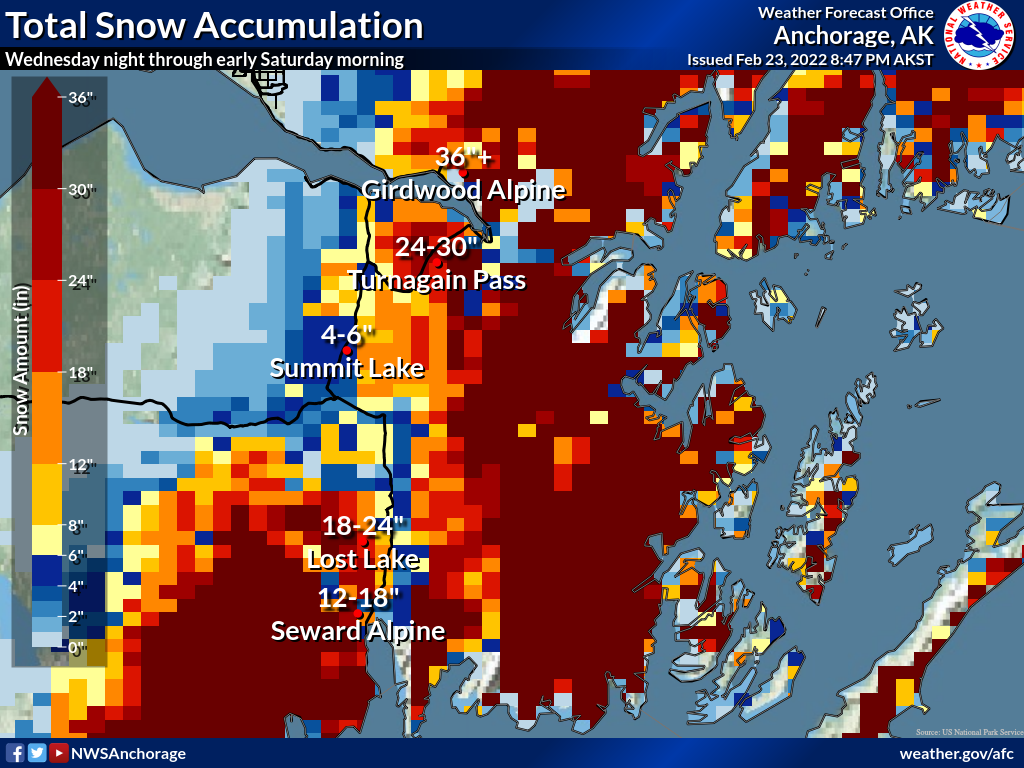Turnagain Pass
|
|
Avalanche Warning
Issued: February 24, 2022 6:00 pmTravel in avalanche terrain is not recommended. Avoid being on or beneath all steep slopes. |
6pm UPDATE:
The avalanche danger is rising to HIGH overnight due to increasing snowfall, rain and wind. An Avalanche Warning has been issued beginning at 6pm today, Thursday, that will extend through tomorrow, Friday.
The avalanche danger is CONSIDERABLE at all elevations today and will likely rise to HIGH this evening and into tomorrow as snowfall totals start to add up. Human triggered avalanches 2-3′ deep in areas with fresh wind loading are likely and natural avalanches are possible. The potential for avalanches to release on deeper weak layers and create very large avalanches 3-6′ deep also exists in areas with a weaker overall snowpack. Conservative decision-making and careful terrain and snowpack evaluation are essential for safe travel today.
* The avalanche danger is expected to rise overnight and remain elevated throughout the day on Friday.
PORTAGE/PLACER: Very heavy snowfall during the day today will create elevated avalanche danger and this area will rise to HIGH danger earlier than the rest of the forecast zone. Human triggered avalanches will be very likely once a foot or more of new snow piles up and natural avalanches will be likely from new snow and wind loading. Travel in avalanche terrain is not recommended.
CROW PASS ZONE: Strong winds today and over the next 48 hours will create elevated avalanche hazard in the Crow Creek area, which already has a weak snowpack and has seen large natural avalanches in the past week.


